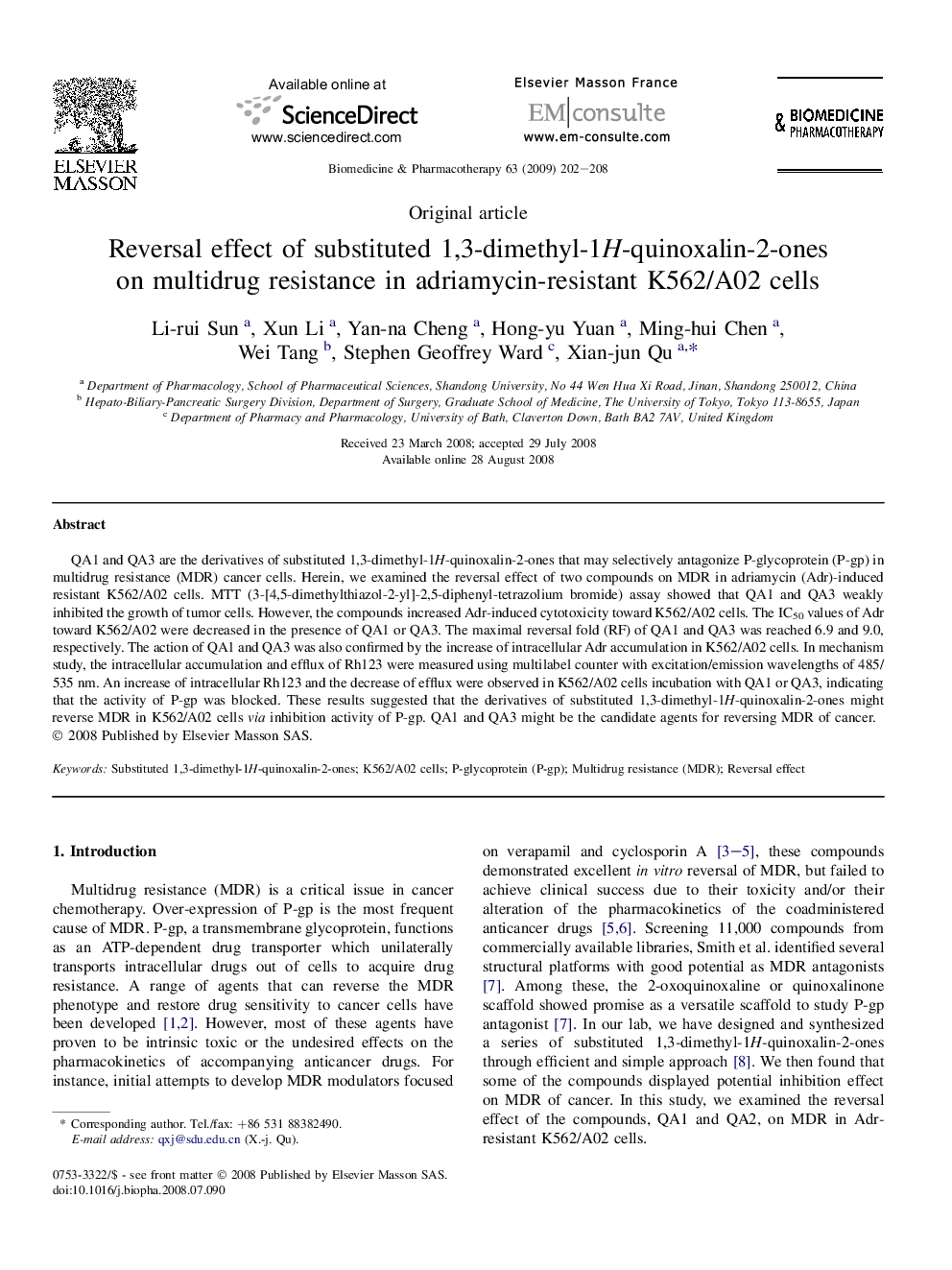| Article ID | Journal | Published Year | Pages | File Type |
|---|---|---|---|---|
| 2525513 | Biomedicine & Pharmacotherapy | 2009 | 7 Pages |
Abstract
QA1 and QA3 are the derivatives of substituted 1,3-dimethyl-1H-quinoxalin-2-ones that may selectively antagonize P-glycoprotein (P-gp) in multidrug resistance (MDR) cancer cells. Herein, we examined the reversal effect of two compounds on MDR in adriamycin (Adr)-induced resistant K562/A02 cells. MTT (3-[4,5-dimethylthiazol-2-yl]-2,5-diphenyl-tetrazolium bromide) assay showed that QA1 and QA3 weakly inhibited the growth of tumor cells. However, the compounds increased Adr-induced cytotoxicity toward K562/A02 cells. The IC50 values of Adr toward K562/A02 were decreased in the presence of QA1 or QA3. The maximal reversal fold (RF) of QA1 and QA3 was reached 6.9 and 9.0, respectively. The action of QA1 and QA3 was also confirmed by the increase of intracellular Adr accumulation in K562/A02 cells. In mechanism study, the intracellular accumulation and efflux of Rh123 were measured using multilabel counter with excitation/emission wavelengths of 485/535Â nm. An increase of intracellular Rh123 and the decrease of efflux were observed in K562/A02 cells incubation with QA1 or QA3, indicating that the activity of P-gp was blocked. These results suggested that the derivatives of substituted 1,3-dimethyl-1H-quinoxalin-2-ones might reverse MDR in K562/A02 cells via inhibition activity of P-gp. QA1 and QA3 might be the candidate agents for reversing MDR of cancer.
Related Topics
Health Sciences
Medicine and Dentistry
Oncology
Authors
Li-rui Sun, Xun Li, Yan-na Cheng, Hong-yu Yuan, Ming-hui Chen, Wei Tang, Stephen Geoffrey Ward, Xian-jun Qu,
